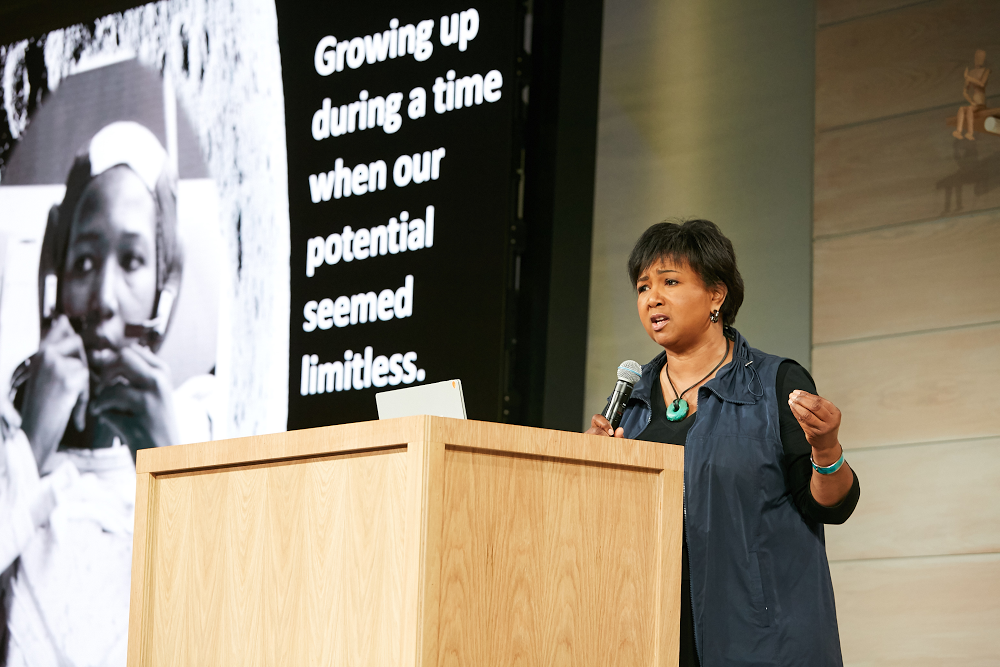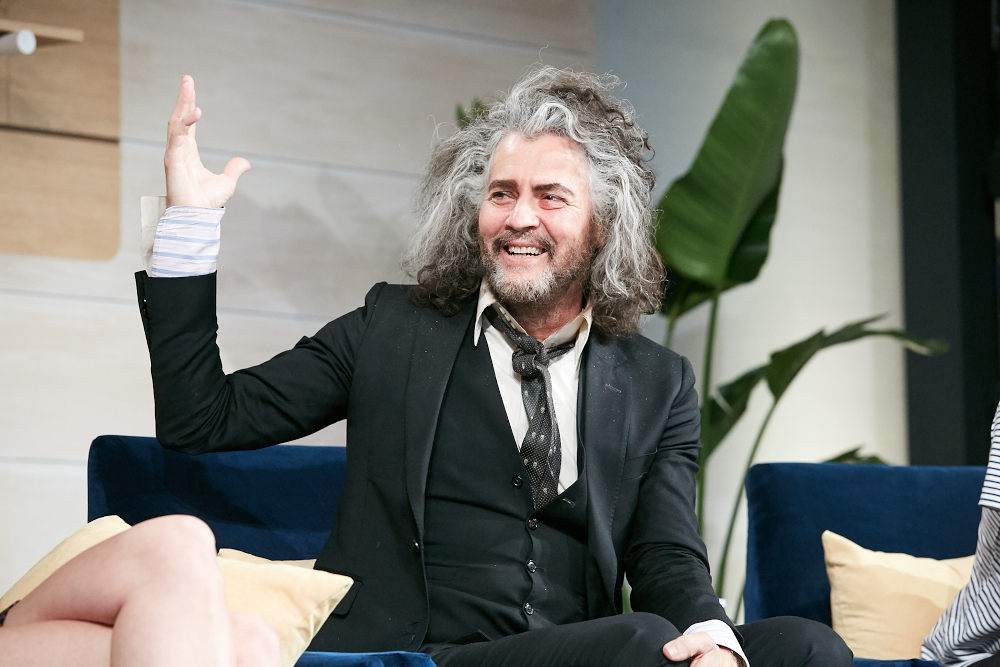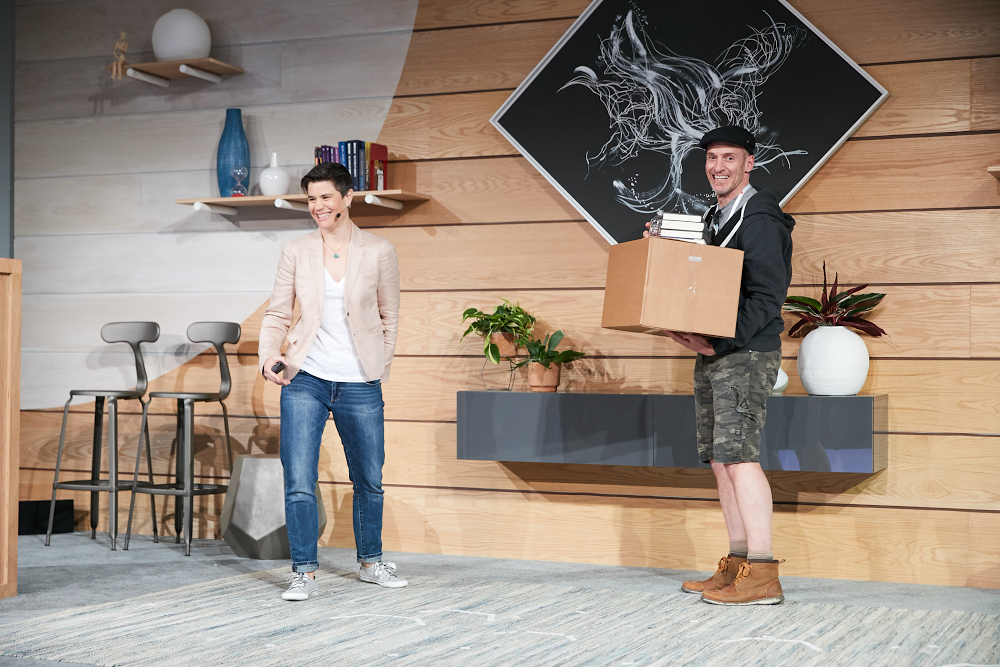Google I/O didn’t just have developers in attendance. Rock stars, astronauts and Turing Award winners took the stage for more than a dozen Inspiration Sessions, in which attendees learned about how technology is shaping the future, from music to art to creativity. Here are just a few lessons learned from these talks:
The key to creativity is thinking like a child.Academy Award-winning animator Glen Keane created beloved characters like Ariel, The Beast and Pocahontas. He told attendees that no matter your line of work, it’s important to stay in touch with your inner child. “We all had that six-year-old kid that had something to do with who you are today and what you are doing,” he said. “Don’t forget that part of the adventure you had as a child.”
Glen Keane does a live drawing of The Beast from “Beauty and the Beast.”
If technology is the answer, what is the question?That’s the thesis behind the work of artist and researcher Sougwen Chung, who has programmed robots to collaborate with her to create artwork. She spoke alongside Cedric Kiefer, co-founder and creative lead of the art studio Onformative, and Kenric McDowell, co-leader of the Artist + Machine Intelligence program at Google Arts & Culture. The three talked about the relationship between artists and AI, and whether AI could fully replace artists. “It’s the question of how you actually use technology in your art, in your practice,” Cedric said. “Do you just write a little bit of code and press ‘art, art, art, more art?’ That’s not exactly how it is.”
Be audacious, and think bigger. Astronaut Mae Jemison, the first woman of color to go into space, leads 100 Year Starship, an initiative to make sure humans can travel to another star in the next century. “When you look at space exploration, the audacity of it makes a difference,” she said. “I don’t think Mars pushes us hard enough.” She was joined in the talk by Sheperd Doeleman, a Harvard astrophysicist who helped construct the first-ever photo of a black hole—an audacious project in itself.

Astronaut Mae Jemison.
Technology can push you to create new things. Claire Evans, the singer of the band YACHT, incorporated machine learning into the creation of their new album with help from Google’s Magenta, a research project that explores the role of ML in art. She used Magenta to create new melodies based on YACHT’s back catalog. “It forcibly pushed us outside of our comfort zone, and forced us to play differently and think differently about how we work,” she said. She was joined by Googlers Adam Roberts and Jesse Engel, who work on Magenta, as well as a surprise guest, Wayne Coyne of The Flaming Lips, who discussed how his band used Magenta for their I/O performance.

Wayne Coyne of The Flaming Lips.
AI can be used to fight climate change.Mustafa Suleyman, co-founder at DeepMind, is responsible for integrating its AI systems into Google products. He talked about how his team has made the energy from Google’s wind farms 20 percent more valuable, and has reduced energy use for Android phones. “Energy consumption is one of the largest contributors to climate change,” he said. “[We thought,] How could we as a team start to focus significant amounts of our effort on this really important problem?”
Space is full of wonder—and mystery, too. Famed theoretical physicist Michio Kaku spoke with inventor and entrepreneur Taylor Wilson about a wide range of topics, from string theory to multiverses to why he’s determined to complete Einstein’s theory of everything. He also weighed in on the recent first image of a black hole: “A black hole is a cosmic roach motel. Everything checks in, nothing checks out. But then the question is, where does all that stuff go?”
A feature may be a huge deal, even if you don’t use it.Hiroshi Lockheimer, Google’s senior vice president of Platforms & Ecosystems, sat down with writer and podcaster Florence Ion to share insights about the latest from Android, Chrome, Chrome OS and Google Play. And he weighed in on one of Android Q’s newest features: Dark Mode. “I will say, I’m personally not a huge Dark Mode person,” Hiroshi admitted. “I’m an outlier. But your feedback was heard.”
Different is the new normal.Elise Roy, an inclusive design strategist, struggled to prove she was “normal” after becoming deaf at age 10. Eventually she realized that small design changes can make a huge difference in her life. Something as small as a bright red hearing aid “created this huge shift in my life,” she said. “It allowed me to celebrate my difference and allowed others to join in.” Two Googlers, Michael Brenner and Irene Alvarado, also took the stage to discuss another inclusive project: Euphonia, an effort to help computers understand diverse speech patterns.

Elise Roy and an audience member demonstrate the “momentary disabilities” everyone faces from time to time.
The most brilliant AI is inspired by how the human brain functions.Geoffrey Hinton, Google Fellow and Turing Award winner, spoke with Nicholas Thompson, editor in chief of “Wired,” about why he kept working on neural nets when the rest of the AI community started to back away from the concept in the 90s: “You have two options. You can program it, or you can learn. This had to be the right way to go.” Although he says, “We are neural nets—anything we can do they can do,” he emphasized that he’s not trying to recreate the brain, but instead “looking at the brain and saying, this thing works. If we want to make something else that works, let’s look at it for inspiration.”
Engineer for lasting innovation.Astro Teller, Captain of Moonshots at X, talked about the concept of lasting innovation and the role ethics and diversity of perspectives play. “The real issue is whether in the long-term society is happy with the thing that you put into society.” Astro emphasized that lasting innovation holds itself accountable to the communities in which it operates and society at large.
Source : 10 lessons learned from Inspiration Sessions at I/O 2019








